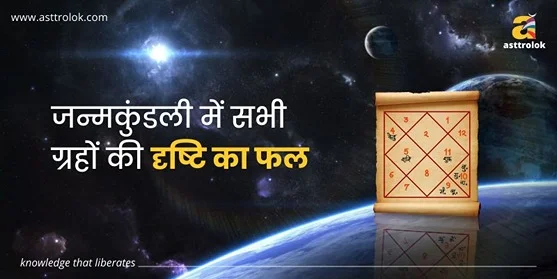
In India's Panchang or calendar, there are numerous variations and versions. Following that, each faith has its schedule for religious events. Panchangam, also known as Panchang, is a Hindu calendar that includes details such as Muhurat, Pakshas, Vaar, Tithi, and so on.
Know muhurta, tithis, Vaar, and everything about Panchang to start your auspicious work. Get online astrology consultation with the best astrologer in India and know the perfect time to start anything new in your life. Book your appointment now.
What exactly is Panchang?
Hindu calendar or Panchangam collection of lunisolar calendars widely utilized in Vedic astrology. It's a Sanskrit-based term. The term, "Panch," signifies five, while the "Ang," means Limbs. It is simply a static method of telling the time that varies according to the Sun or Moon cycle, month names, and the start of the New Year.
It keeps track of lucky and important dates, as well as astrological facts provided in a table format. Panchang is regarded to be of utmost importance before undertaking any Shubh Karya or fortunate activity.
How can we read a Panchang correctly?
STEP 1: Understand the Panchang calendars.
Various Indian festivals and fasts follow regional Hindu calendars, which are based on two main elements: the Solar Calendar and the Lunar Calendar. Lunisolar calendars are the general name for these.
Let's have a look at these two kinds of calendars:
- Solar Calendars: Such calendars are based on the transit system of the Sun. In various places of India, you can observe all of the Sankranti(s) as per the solar calendar.
- Lunar Calendars: Such calendars are based on the lunar aspect and follow the Moon movement. The lunar calendars play an important part in determining Shubh Muhurtas. The Panchang is also a lunar calendar.
STEP 2: Become familiar with the words used in Panchang.
Panchang, like the English or European calendars, is based on the Samvat (Year), Maas or Maah (Months), and Tithi (Days) (the dates).
- Samvat (The Year)
The Samvat is the Hindu calendar's name for a particular year. There is a variety of Samvat (methods) for calculating the time and year. The Isvi Samvat is the one that is utilized today throughout the world.
Some calendars that you may be familiar with include:
- Buddha Samvat
- Mahavir Samvat
- Hijri Samvat
- Sikh Samvat
- Irani Samvat Buddha
- Yaudi Samvat are a few examples.
Vikram Samvat, on the other hand, is the calendar we'll be learning about here. It is the Hindu Panchang's calculating system that we are learning.
- Maas/Maah (The Month)
The Maas or Maah are the months in the Hindu Panchang. They, too, are divided into 12 months, exactly like the English calendar:
- Chaitra (March-April)
- Vaisakha (April-May)
- Jyestha (May-June)
- Asadha (June-July)
- Sravana (July-August)
- Bhadrapada (August-September)
- Asvina (September-October)
- Kartika (October-November)
- Margashirsha (November-December)
- Pausha (December-January)
- Magha (January-February)
- Phalguna (February-March)
- Vaar (The Days) Vaar refers to the days listed in the Hindu calendar. The following are some of them:
- Somvar (Monday)
- Mangalvar (Tuesday)
- Budhvar (Wednesday)
- Guruvar (Thursday)
- Shukravar (Friday)
- Shanivar (Saturday)
- Ravivar (Sunday)
- Tithi (The Dates)
Tithi refers to a certain date on the Panchang calendar. To be clear, each of the Moon's arcs represents a month's Tithi, and each Tithi appears twice per month. As a result, these are also known as Panchang days or the Panchang date system. Tithi is subdivided into these categories:
- The First Pakhwada is Krishna Paksha (15 days)
- The Second Pakhwada is Shukla Paksha (15 days)
STEP 3: Familiarize yourself with the Shukla and Krishna Pakshas.
During its movement from Full Moon to New Moon, and again, the Moon displays 15 evenly computed arcs. The Poornima, or Full Moon, occurs when the Moon is completely illuminated. A New Moon, on the other hand, signifies Amavasya when the Moon's brightness is blocked. These 15-day intervals are referred to as the Krishna and Shukla Pakshas, respectively.
STEP 4: Keep Purnima and Amavasya in mind.
When it comes to the Full or New Moon, there are a few things to keep in mind:
- The fading Moon occurs after the Purnima. As a result, it will remain in this category until the Amavasya.
- The rising phase lasts from the time you see a New Moon nearing Purnima until the time you see a Full Moon nearing Purnima.
- Each month finishes on Purnima rather than Amavasya.
Conclusion:
This is a very essential concept for Hindus to understand while mastering how to read Panchang. The Shubh Muhurtas are the fortunate days, times, and times that are favorable to carry out certain work according to the planets. Panchang's reading assists in determining these Muhurtas.
Online astrology course with Asttrolok, Learn astrology at the institute of Vedic astrology where you can learn everything about astrology, Panchang, that you need to know. Learn everything about the Vedic Astrology course, including the Vastu Shastra course, numerology course, ayurvedic astrology course, and palm reading from the world-renowned astrologer Mr. Alok Khandelwal. Online free astrology course is available.
Comments (0)
Categories
Recent posts


जन्मकुंडली में ...
30 Aug 2023
Importance of Bhakoot Koota in Kundali ...
30 Aug 2023

.webp)














